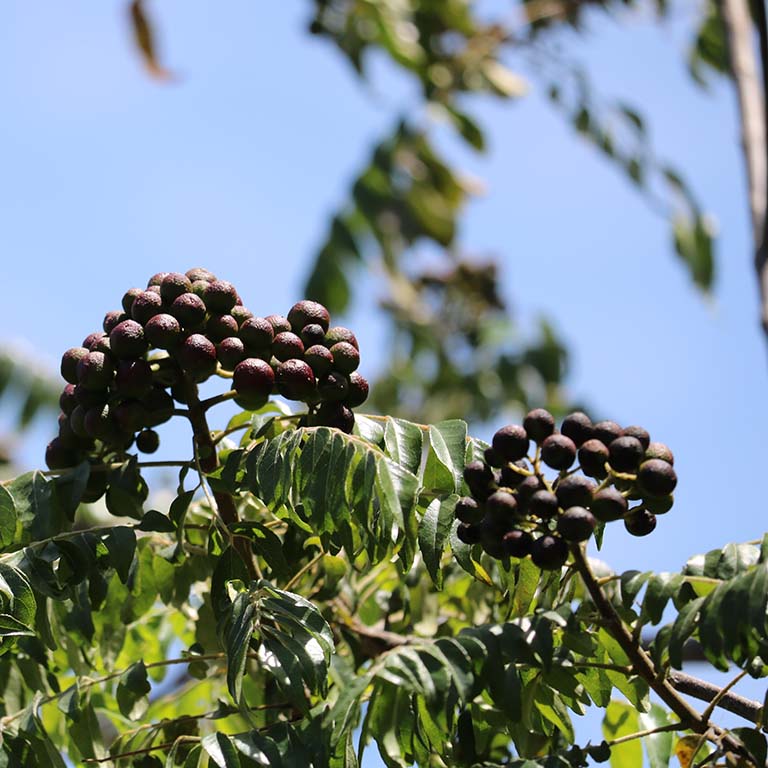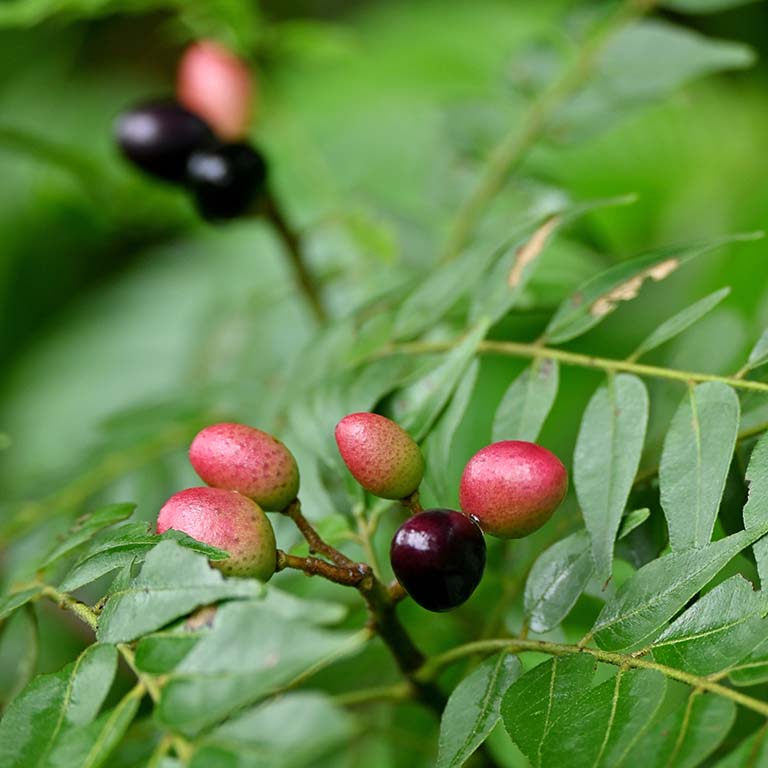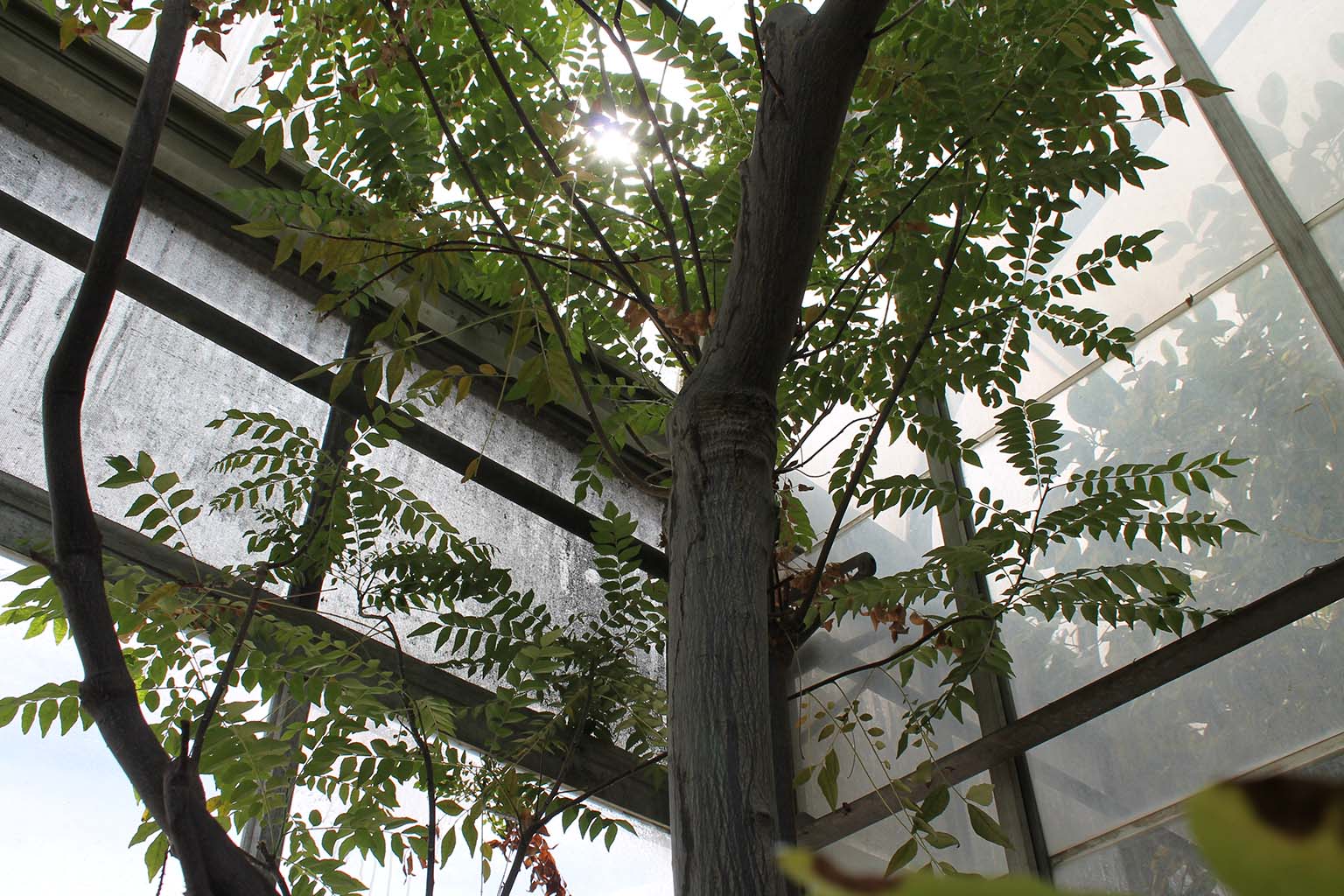Family: Rutaceae
Scientific name: Murraya koenigii
Common name: Curry leaf tree
Native of: Moist forests in India and Sri Lanka
Greenhouse location: Room J
Family: Rutaceae
Scientific name: Murraya koenigii
Common name: Curry leaf tree
Native of: Moist forests in India and Sri Lanka
Greenhouse location: Room J

Rub the leaves of Murraya koenigii, commonly known as curry leaf tree, to bring out their strong scent. These pungent, aromatic leaves are used as a popular flavoring in Indian and Asian cuisine.
Frying the fresh leaves in oil enhances the flavor. They are frequently used in vegetable dishes, as well as in many other dishes—including meat, seafood, sauces, relishes, marinades, and omelets. Although dried curry leaves are also used in cooking, they have far less flavor than fresh.
During colonial rule in India, the British developed yellow curry powder—a blend of several Indian spices which sometimes included curry leaf.
The tropical/subtropical curry leaf tree usually grows 6 to 15 feet in height, producing clusters of small, fragrant, white flowers. The flowers, in turn, produce shiny, bluish-black drupes. The sweet fruit pulp is edible, but the seeds are not.



Travelers are restricted from bringing M. koenigii into the United States because it can carry pests associated with citrus diseases. U.S. Customs and Border Protection agriculture specialists and their canine partners are trained to detect curry leaf. Travelers attempting to bring it into the country can face penalties.
Note that the unrelated curry plant (Helichrysum italicum), a member of the aster family, has a curry-like aroma but is not recommended for use in cooking.
